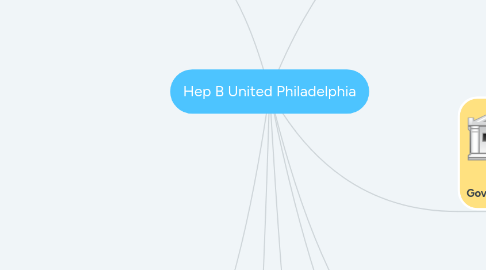
1. Academic Institutions
1.1. Temple University
1.1.1. Center for Asian Health at Temple University
1.1.2. Project Shine at Temple University
1.2. Drexel University
1.2.1. School of Public Health
1.2.2. Pre-PA Club
1.2.3. College of Medicine
1.2.4. APAMSA
1.3. University of Pennsylvania
1.3.1. Team HBV
1.3.2. University of Pennsylvania Asian Health
1.4. Philadelphia College of Osteopathic Medicine APAMSA
1.5. Princeton University
1.5.1. Team HBV
1.6. United Healthcare University of Medicine and Dentistry of NJ APAMSA
1.7. Robert Wood Johnson University Medical Center APAMSA
1.8. Thomas Jefferson University Hospital & APAMSA
1.9. The University of the Sciences in Philadelphia
1.9.1. Hepatitis Treatment, Research and Education Center (Hep TREC)
2. Non Profit Organizations
2.1. Cultural Organizations
2.1.1. African Family Health Organization (AFAHO)
2.1.2. Asian Health Collaborative
2.1.3. Cambodian Association of Greater Philadelphia
2.1.4. Asian American United
2.1.5. VietLead
2.1.6. North Penn Korean Coalition
2.1.7. Chinese Benevolent Association
2.2. Regional Public Health/Health Organizations
2.2.1. Public Health Management Corporation
2.2.2. Philip Jaisohn Memorial Center
2.2.3. Planned Motherhood, SE Pennsylvania
2.2.4. Philadelphia County Medical Society (PCMS)
2.2.5. Philadelphia Corporation for Aging
2.2.6. Intercultural Family Services Liver Disease Prevention Center
2.2.7. Health Promotion Council of Southeast PA
2.3. Religious Organizations
2.3.1. Asian Community Health Coalition Bethany Indonesian Church of God
2.3.2. Chinese Christian Church and Center
2.3.3. Philadelphia Praise Center
2.4. National Organizations
2.4.1. American Liver Foundation, Mid-Atlantic Division
2.4.2. American Cancer Society
3. Philadelphia Residents
3.1. HBV infected persons
3.1.1. Friends
3.1.2. Family members
3.1.2.1. Parents
3.1.2.2. Partners
3.1.2.3. Siblings
3.1.2.4. Children
3.1.2.5. Extended family
3.1.3. Neighbors
3.1.4. Other social support groups
4. Barriers: Lack of coverage,lack of funding for pharmaceutical R&D, lack of public awareness, lack of language services
5. High Power: Media, Health Systems, federal/local government, pharmaceutical companies, academic instututions
6. Low Power: Businesses, Philly Residents
7. Health Systems
7.1. Community Health Workers
7.2. Clinics
7.2.1. Chinatown Medical Services
7.3. Hospitals
7.3.1. Children's Hospital of Pennsylvania
7.3.2. Robert Wood Johnson University Medical Center APAMSA
7.3.3. Albert Einstein Center for Liver Disease and Transplant
7.3.4. Fox Chase Cancer Center
7.4. Healthcare Providers
7.4.1. Doctors
7.4.2. Nurses
7.4.3. Social Workers
7.4.4. Physician's Assistants
7.5. Pharmacies
7.5.1. Pharmacists
7.5.2. AmeriCare Pharmacy
7.6. Insurance Companies
7.7. Pharmaceutical Companies
7.7.1. GlaxoSmithKline
7.7.2. Gilead Sciences
7.7.3. Bristol Myers Squibb
8. Government
8.1. Local Government
8.1.1. Philadelphia Department of Behavior Health and Intellectual disAbility Services (DBHIDS)
8.1.2. Philadelphia Department of Public Health
8.1.3. Philadelphia Health Department
8.1.4. Philadelphia Department of Behavior Health and Intellectual disAbility Services (DBHIDS)
8.2. Federal Government
8.2.1. Department of Health & Human Services
8.2.1.1. NIH
8.2.2. Pennsylvania Health Department
9. Businesses
9.1. Restaurants
9.1.1. Greater Philadelphia Chinese Restaurants Association
9.2. GeneroCity.com
10. Hepatitis B Foundation
10.1. Donors
10.2. Community Partners
10.2.1. Refugee Health Partners
